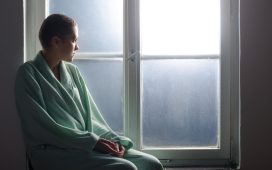Combination therapy better than drug therapy alone, but not better than behavioral therapy alone
MONDAY, Jan. 13, 2020 (HealthDay News) — Among men with overactive bladder, combined behavioral and drug therapy is superior to drug therapy alone, but not behavioral therapy alone, for symptomatic improvement, according to a study published online Jan. 13 in JAMA Internal Medicine.
Kathryn L. Burgio, Ph.D., from the University of Alabama at Birmingham, and colleagues conducted a three-arm randomized clinical trial in which participants aged 40 years or older with urinary urgency and nine or more voids per 24 hours were randomly assigned to six weeks of behavioral therapy alone, drug therapy alone, or combined therapy, followed by step-up to six weeks of combined therapy for all groups. A total of 183 men completed treatment.
The researchers found that in all three groups, the mean voids per 24 hours decreased significantly from baseline to six-week follow-up (behavioral therapy: change, 2.9; percentage change, 24.7 percent; drug therapy: change, 1.5; percentage change, 12.7 percent; combined therapy: change, 13.6; percentage change, 30.5 percent). Posttreatment mean voiding frequencies were significantly lower for those receiving combined therapy versus drug therapy alone (8.2 versus 10.3) but not compared with those receiving behavioral therapy alone (8.2 versus 8.8); frequencies were significantly lower for those receiving behavioral therapy alone versus drug therapy alone (8.8 versus 10.3).
“Behavioral therapy can be implemented by nurses, nurse practitioners, and physical therapists and has potential for widespread application in a variety of outpatient settings,” the authors write.
Several authors disclosed financial ties to the pharmaceutical, medical technology, and personal care industries.
Copyright © 2020 HealthDay. All rights reserved.








